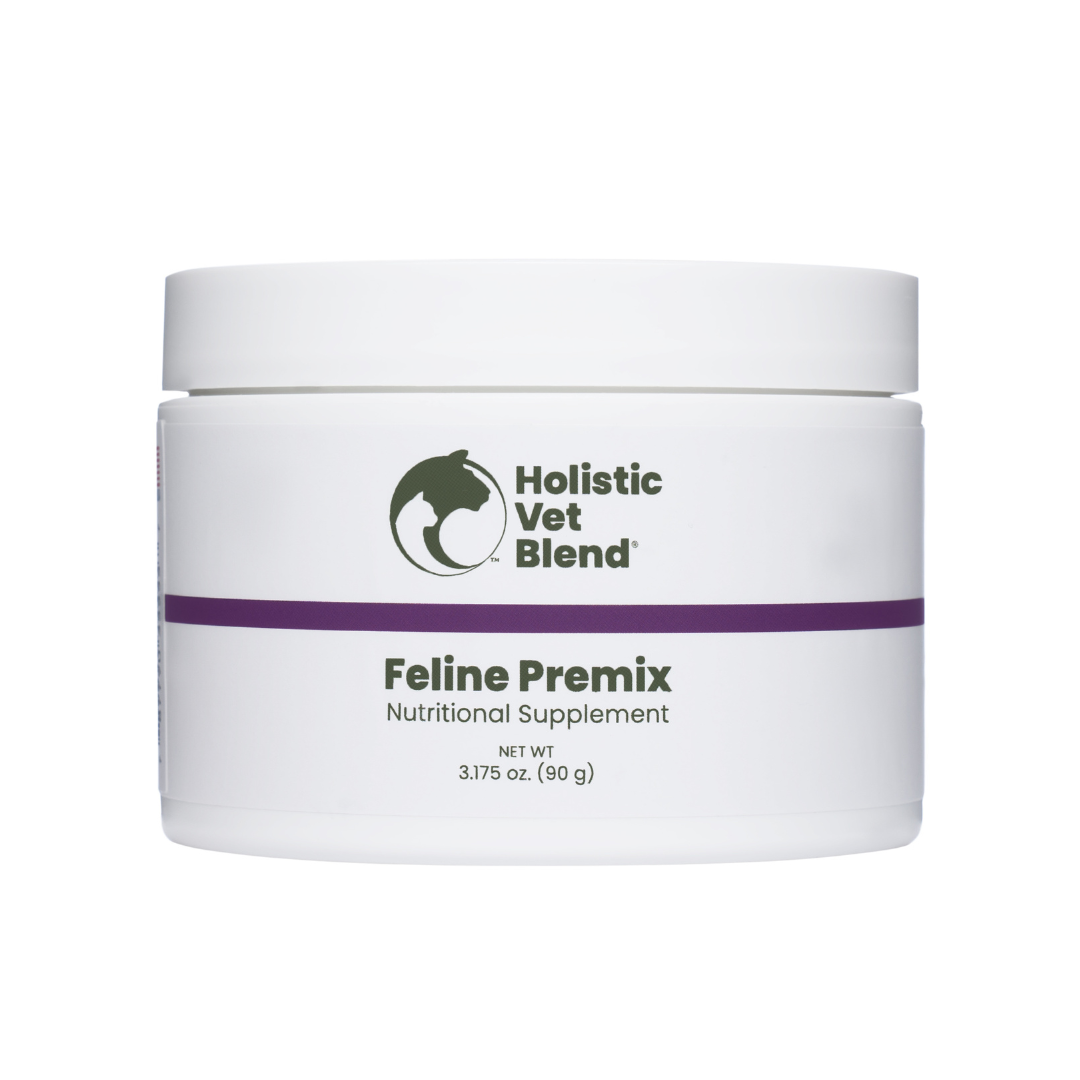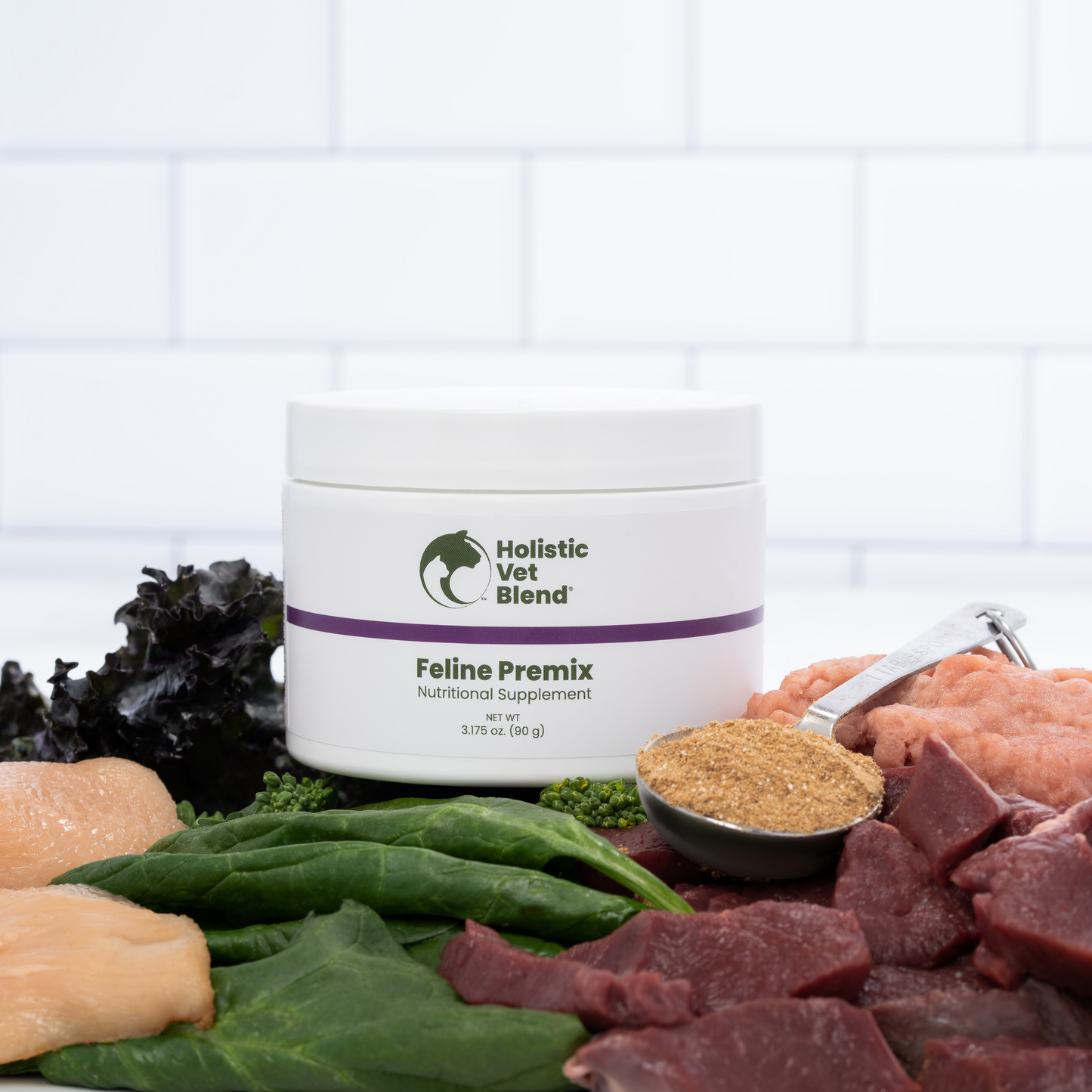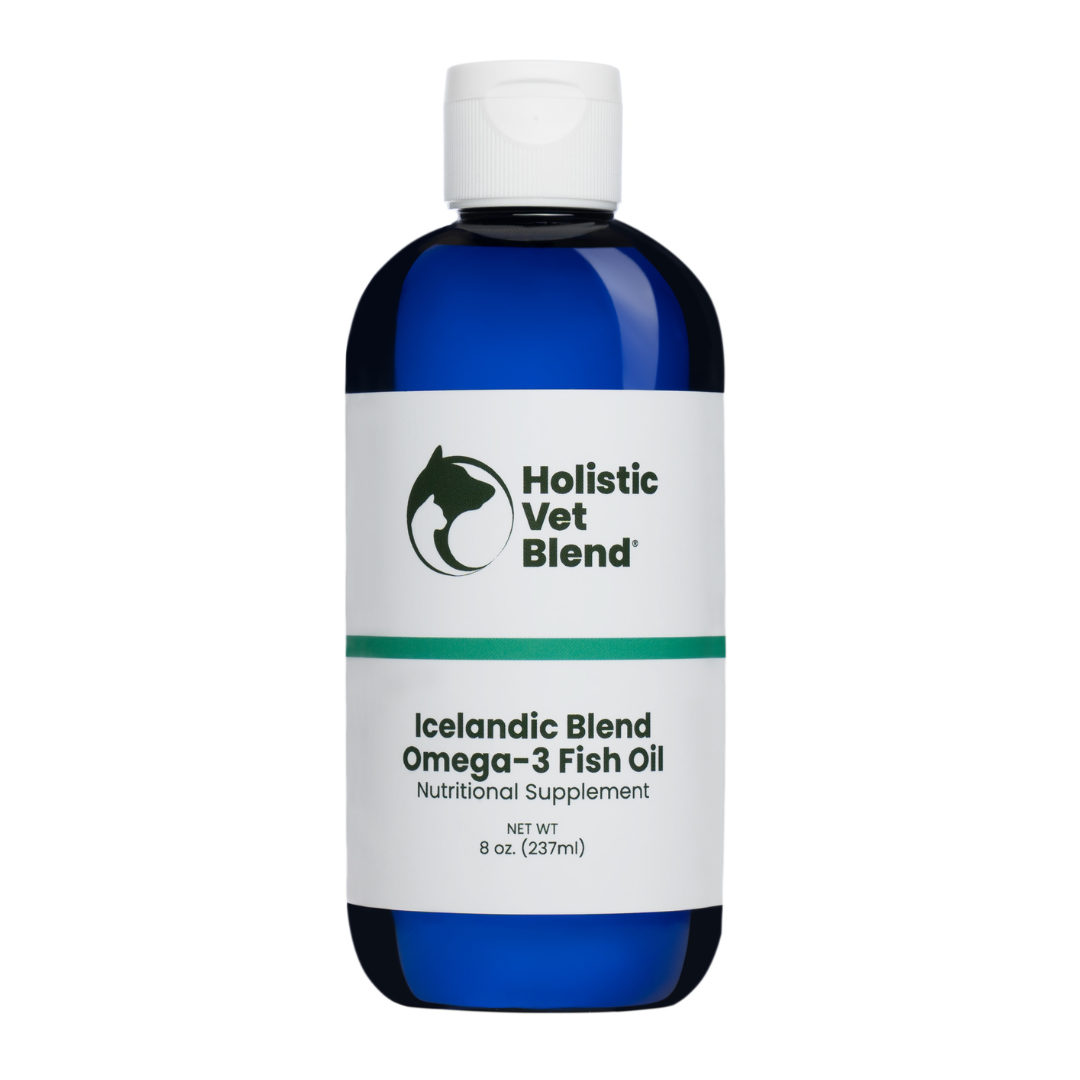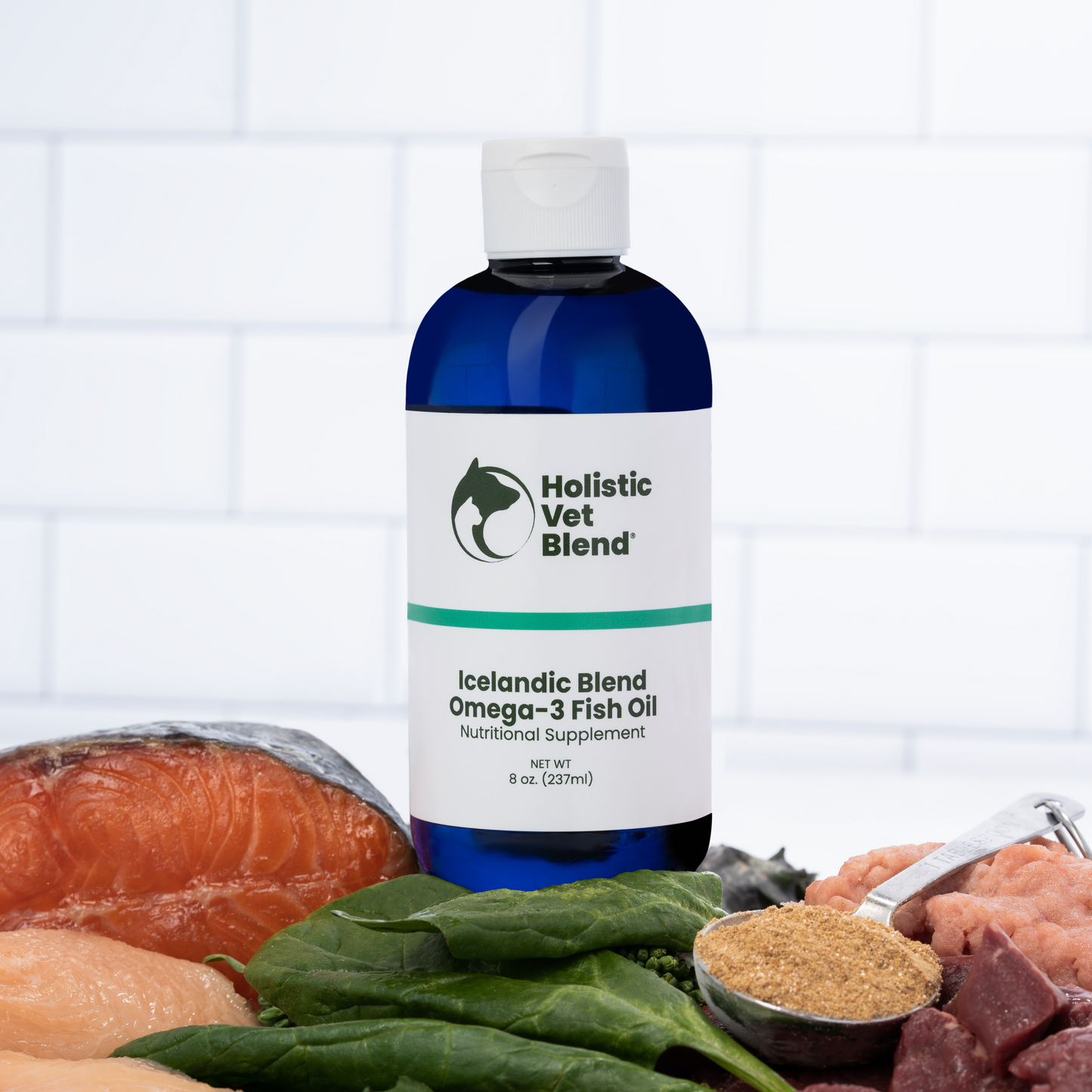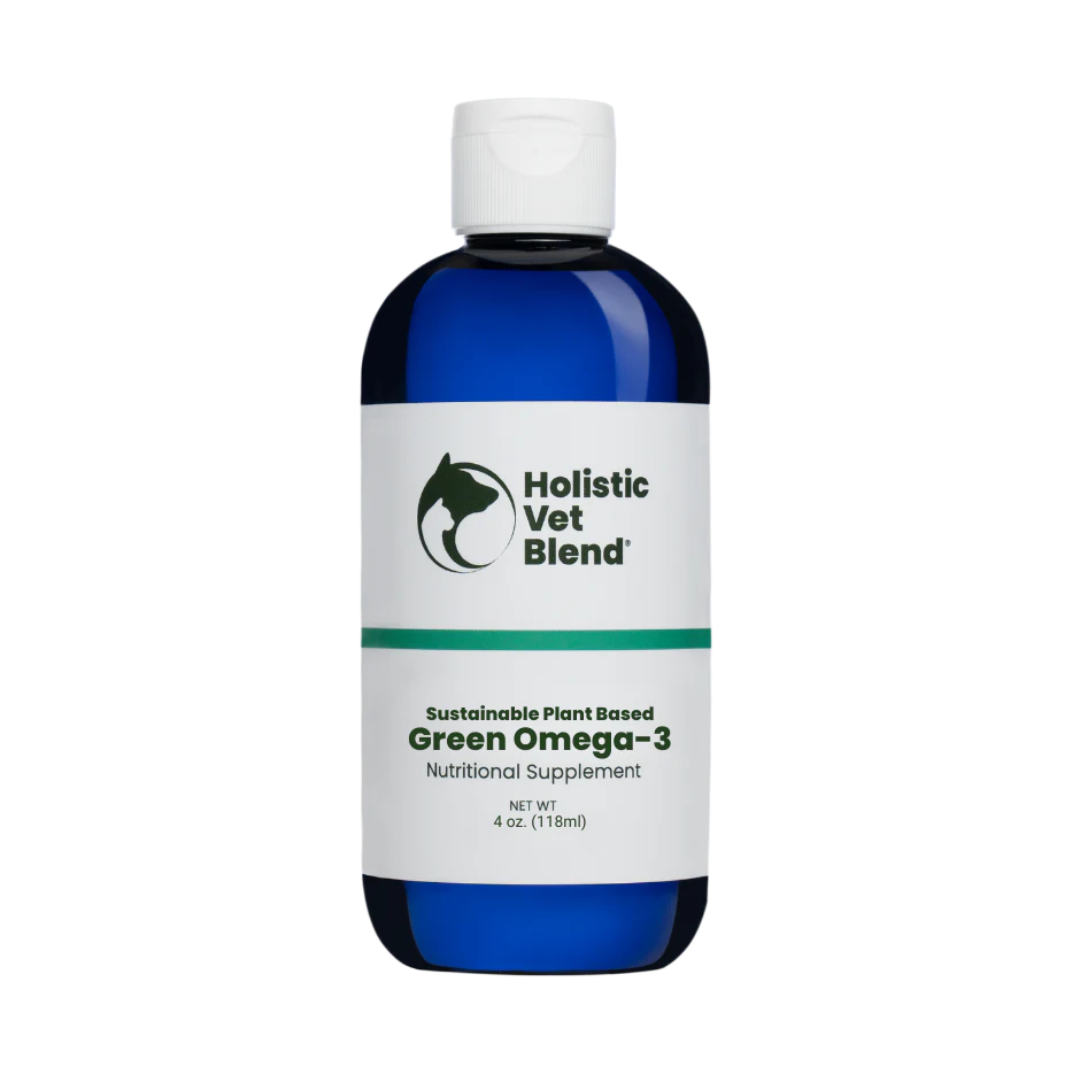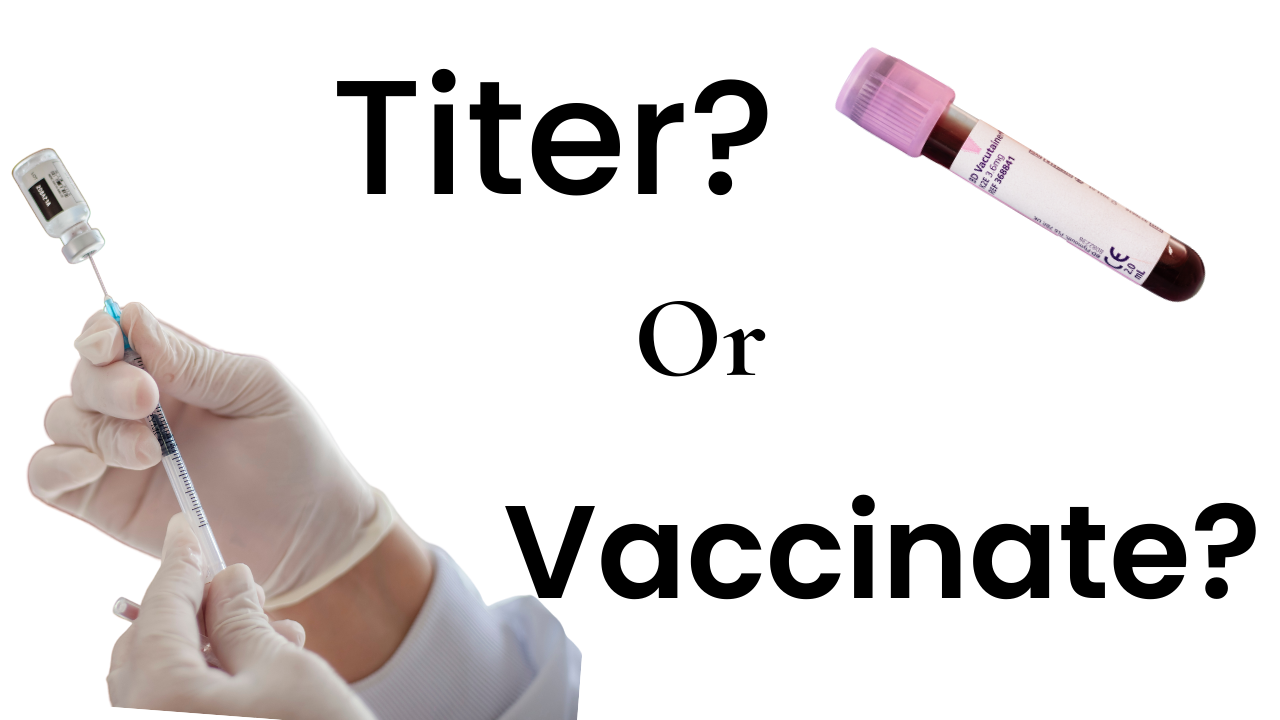
The vaccine reminder from your veterinarian comes, or there’s an outbreak of parvovirus or distemper at your local shelter. You wonder, is my pet protected? In this blog post, I will review the purpose of titers, the best time to run them, and pets that should have special consideration when deciding whether to booster or titer.
What is titer testing?
A vaccine titer test, also known as serologic or antibody testing, is a blood test that measures the level of antibodies to a particular disease in your pet’s bloodstream. The immune system produces antibodies in response to vaccination or exposure to a disease. By measuring the antibody levels, the titer test can help determine if your pet has sufficient protection against the disease or if they require a booster vaccine. But many veterinarians differ in their opinion as to the usefulness of titers and how to interpret them. In this blog post, I’ll review the latest thinking (things have greatly changed) and what leading immunologists reveal about titers.
When evaluating your pet’s risk for disease and immunization status, there are numerous factors to consider. These include your pet’s age, lifestyle, and overall health. Some pets may have a higher risk of exposure to certain diseases,
such as those that frequently interact with other animals or live in areas with a high prevalence of certain diseases. Additionally, some pets may have medical conditions or other factors that make vaccination riskier. Others have autoimmune conditions and take medication that suppresses their immune response. When planning with your veterinarian, these factors in your pet’s unique situation should be considered.
Every pet’s immune system, as is their response to vaccination, is different. Certain breeds are known for a “sluggish” response to vaccinations: Another important issue with vaccination response is that early in a puppy’s life, maternal antibodies interfere with the vaccine, and these puppies will not be “immunized.” A vaccine series is done with 3–4-week intervals which, as the maternal antibodies wane, the puppy will ultimately respond, especially around 14-16 weeks.
In what situations is titer testing most helpful?
- Animals with chronic diseases, autoimmune disease, or cancer
- A rescued adult animal with unknown history
- A pet on medications that alter the immune response such as steroids
- History of prior adverse reaction
- Best time for dogs and cats is 1 month after the booster is given a year after the initial vaccine series. If the test shows immunity, then they are covered for life. If the test is negative or insufficient titer, obviously they are not protected and should receive a “booster”. I don’t think I have ever seen this.
- Breeds that tend to be late or nonresponders such as Rottweilers
Timing of Vaccination and Titer Testing in Dogs
Initial puppy series for CORE vaccines: Distemper, Adenovirus, and Parvovirus starting at 8-9 weeks, 12 weeks, and the most important of all vaccines is the one given at 14-16 weeks. Rabies is given around 16 weeks. This is when the
immune system is most ready to say, “I’ve got it!” Whatever you do, do not miss this important window to protect your pet. I will explain later why a “boost” at 1 year is recommended (hint, there are non-responders…)
Since there is no treatment for Rabies and it is fatal, the likelihood of changing the requirement of every three years after the initial one-year booster is unlikely to change in the near future, although research has shown it lasts much longer than the three years.
Titer Testing in Cats
Cats, of course, are always unique. They develop long-lasting immunity to feline parvo/panleukopenia but not to the calici or herpes viruses component of the vaccination. A viable option would be to use the intranasal vaccine for herpes
and calicivirus as this is not injected into the body and imparts immunity directly in the respiratory tract where it is needed.
I board my dog or cat frequently. What do I do?
I would get the oral or intranasal Bordetella/parainfluenza vaccine for dogs and the intranasal Calici/Feline Rhinotracheitis vaccine for cats as it imparts the best immunity right in the respiratory tract where it is needed. Not having to give an injection is a plus, as cats are at risk for injection-site sarcomas. Also, the intranasal or oral route is more effective for some vaccinations. And if your pet frequents dog shows, boarding facilities, and daycare, you should communicate with your veterinarian on how to protect them best.
In addition, local laws will determine the timeframe for Rabies vaccination. You can apply for an exemption if your pet is, but they are rarely given.
How has thinking about titer testing changed?
Things have changed a lot since the days of vaccinating pets annually. Pet owners had concerns about frequent vaccination and the many vaccines that were being recommended. Of course, we have core vaccinations: Distemper
virus, Adenovirus, Parvovirus, and Rabies virus that are deadly and we can prevent serious disease and/or death. Noncore vaccinations include: rattlesnake vaccine, Leptospirosis vaccination, FELV vaccine, Lyme, coronavirus, etc. At
one point, I remember seeing a Giardia vaccine and even one for ringworm. It’s been quite a few years since the guidelines have changed.
What are some misconceptions regarding titers?
There are some common misconceptions regarding titers. One is that the higher the titer, the stronger the immunity. What is more important than the number is that the pet has reached a threshold that indicates immunity. It is a documented response to vaccination and, therefore, memory.
Another misconception is that when the titer falls below a certain level is the pet still protected? The answer is yes! Once the pet has demonstrated response to vaccination and is “immunized” then they have memory that protects them
from future infection. The cells that create the antibodies against disease are there and will begin producing antibodies against the disease once they are activated. This is the “cellular” aspect of immunity, and it is not measurable. The
importance of this is that once immunity is demonstrated in the form of a measurable acceptable titer the pet will always be “immunized” and possess immunity against the disease.
It’s understandable that we would become concerned when titers fall or even become unmeasurable, but vaccine experts reassure us that once an adequate measurable titer has been taken, it demonstrates that these immune cells are
there and always will be. So we need not worry when the titer falls. This is also backed by research that shows that the core vaccinations last 6-8 years, and in some dogs an entire lifetime. So this makes us wonder why we even bother with
a booster a year after the initial puppy series.
What exactly is considered a booster?
The definition of a booster is that would increase the antibody response by fourfold. In most pets the “booster” does not accomplish this as antibodies bind it up from the first vaccine series. You wonder, why would we even bother if these antibodies are interfering? This is because 5-15% of dogs and cats given the primary series of vaccinations do not mount an adequate and sustained response. As pet owners and veterinarians, we do not want to let these patients fall through the cracks. It’s a critical time to prime the immune system for life and protect our pets with what is essential without over-vaccinating.
So what would be the best time to titer?
90% of dogs are fully immunized after their core puppy series. The last 10% develop immunity 2-4 weeks after a booster one year later. The best time to titer would be a month after this one-year booster. A titer at that time representing adequate immunity would support no further need to booster or titer. Even progressively declining titers and even a negative titer would not be needed, as there are cells present that when reactivated by an infection would fight infection. That’s right! There is no need to titer further as they would have immune memory for life.
Is there a downside to titer testing?
It is important to note that titer testing is not a guarantee of immunity, and there are limitations to its accuracy. Some pets may have low antibody levels even if they are protected against the disease, while others may have high antibody
levels but still be susceptible to infection. This is because there are two components to immunity: humoral (measured as antibodies) and cellular (the cells that fight Infection are present and functional). In addition, titer testing can be more expensive than revaccination, and some veterinarians may not offer it as an option.
Is titer testing expensive?
Titer testing has become much more affordable with in house tests, but not all veterinarians run them. The cost varies widely so it’s best to call around and inquire.
What is involved with titer testing?
It’s a simple blood draw and some tests are even done on the premises of your veterinarian. The good news is if you time it right and your pet has demonstrated immunity in early adulthood of dogs to distemper, adenovirus, parvovirus and for cats to panleukopenia, they are likely to have lifelong immunity.
Ultimately, the decision to use titer testing or revaccination should be based on your pet’s individual needs and circumstances. By working with your veterinarian, you can make an informed decision based on your pets age, health
status, and risk factors.




